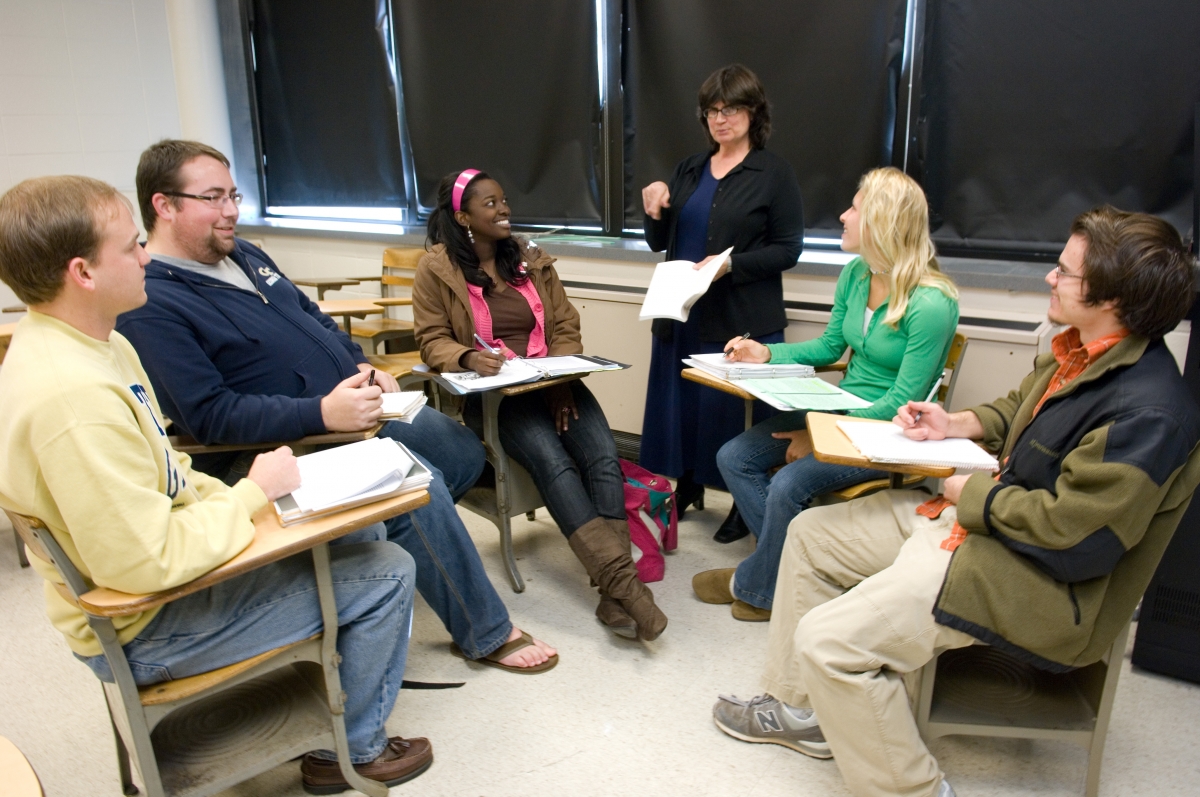 One of the concerns faculty members express about classroom discussion is the possibility that comments and questions might head into divisive or controversial areas. While these discussions often elicit discomfort for both professors and students, they also can be important and beneficial to student learning. In addition, making connections to timely and controversial topics can help students understand the relevance of what they are learning in class.
One of the concerns faculty members express about classroom discussion is the possibility that comments and questions might head into divisive or controversial areas. While these discussions often elicit discomfort for both professors and students, they also can be important and beneficial to student learning. In addition, making connections to timely and controversial topics can help students understand the relevance of what they are learning in class.
For example, helping students identify the assumptions and biases shaping their own points of view supports constructive and effective discussions about controversial issues. Instructors can use a variety of techniques to help students develop self-reflective practices that examine their assumptions and biases. An assistant professor at Carlton College has students respond to a short piece on a controversial topic they are unlikely to know much about, research the topic, and then re-evaluate their initial response. She then introduces the theory of “motivated reasoning” (Kunda, 1990) and has students write a reflective piece on the changes in their perspective.
When a controversial topic is included in course material or becomes part of a class discussion, planned or not, the following steps and strategies can help instructors structure the conversation in ways that support meaningful and respectful sharing.
- Before beginning the discussion, revisit discussion guidelines established at the beginning of the semester.
- Develop a shared understanding of the topic and a range of perspectives by reviewing and discussing materials shared with students in advance. Work to provide examples of competing points of view that represent diverse voices. Then, have students explore their own experiences and values related to the topic and identify areas of ambiguity or uncertainty. That way, students have the opportunity to understand and empathize with different experiences and perspectives before stating a position.
- Use these shared materials to frame the discussion: “What does ________ have to say about this issue? What evidence does she provide? How does her perspective differ from that of ____________?”
- Encourage regular self-reflection by modeling it when lecturing or sharing your own viewpoint during a class discussion. You might, for example, ask aloud “what aspects of my personal experiences and viewpoints shape my evaluation of these competing arguments?”
For more information about how to handle "hot topics" in classroom discussions, visit this Center for Teaching and Learning resource on Dealing with the Unexpected, which also includes advice for dealing with unexpected moments in teaching.
References and Additional Resources
Kunda, Z. (1990). The Case for Motivated Reasoning. Psychological Bulletin, 108(3): 480-498.
Guidelines for Discussion of Difficult or Controversial Topics (University of Michigan Center for Research in Learning and Teaching)
Guidance on Sensitive Topics (University of Maryland Teaching and Learning Transformation Center)
How to Handle News Events and Controversial Topics in Class (The Chronicle of Higher Education)
Reflective Structured Dialogue practices for guiding discussion on difficult topics in respectful and inclusive ways.